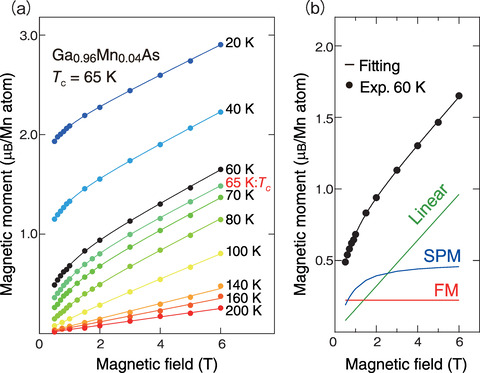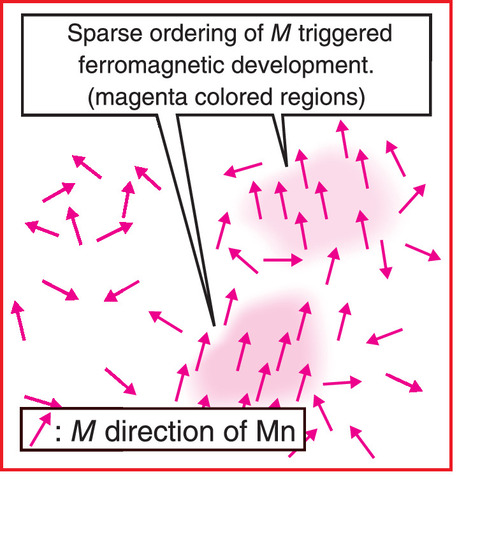
Fig.5-14 Temperature and magnetic field dependence of the XMCD for Ga0.96Mn0.04As

Fig.5-15 Temperature dependence of the ratio of each magnetic component

Fig.5-16 Schematic of the magnetic ordering process around TSPM
Ferromagnetic semiconductors (FMSs), which possess both semiconductor and ferromagnetic (FM) properties, have attracted attention as next-generation spintronics materials. The discovery of ferromagnetism in manganese-doped gallium arsenide (Ga1-xMnxAs; (Ga, Mn)As) broadened the research field of FMSs. Despite enthusiastic investigations, however, there has been controversy over the origin of ferromagnetism for over 20 years. Ferromagnetism appears below the Curie temperature (TC); to apply FMS to spintronics devices, it should be achieved at room temperature. The highest reported TC of (Ga, Mn)As, however, is -73 ℃.
To understand the mechanism of ferromagnetism, it is necessary to clarify the element-selective spin states of Mn responsible for the magnetic properties of (Ga, Mn)As and investigate how ferromagnetism develops. Therefore, we performed X-ray magnetic circular dichroism (XMCD) experiments at JAEA's beamline BL23SU of SPring-8 to observe the magnetic ordering process.
The observed dependence of the magnetic moment of the Mn 3d electrons on the temperature and magnetic field are shown in Fig.5-14(a), as estimated from the XMCD intensity for Ga0.96Mn0.04As with TC = 65 K. The magnetic moment becomes large as the temperature decreases and magnetic field increases, as shown in Fig.5-14(a). This behavior clearly shows development of the FM state at the low temperatures and high magnetic fields.
Fitting allowed three magnetic components to be identified: FM, linear, and superparamagnetic (SPM). Against the magnetic field, these components were constant, increased linearly, and increased non-linearly, respectively, as shown in Fig.5-14(b). The ratio of each component to the total magnetic moment was then defined as PFM, PLinear, and PSPM, respectively (i.e., PFM + PLinear + PSPM = 1 for each measured temperature). The observed temperature dependence of PFM, PLinear, and PSPM is shown in Fig.5-15. Here PFM began increasing as the temperature decreased below TC. On the other hand, PSPM began increasing around a certain temperature (TSPM) above TC, reached a maximum near the TC, and then decreased. This behavior was also observed in other samples with different Mn concentrations and values of TC. These results indicate that SPM regions begin forming at temperatures above TC, i.e., TSPM, and that SPM regions overlap at the TC (Fig.5-16).
This result was selected as a featured paper and the cover of the issue, and an explanatory article was also published.
This work is a part of the results of a joint research project with the University of Tokyo and Kyoto Sangyo University, entitled “Development of functional magnetic semiconductor thin films and study of their electronic states using synchrotron radiation”.
(Yukiharu Takeda)
<Previous: 5-6 | Next: 6 HTGR Hydrogen and Heat Application Research>